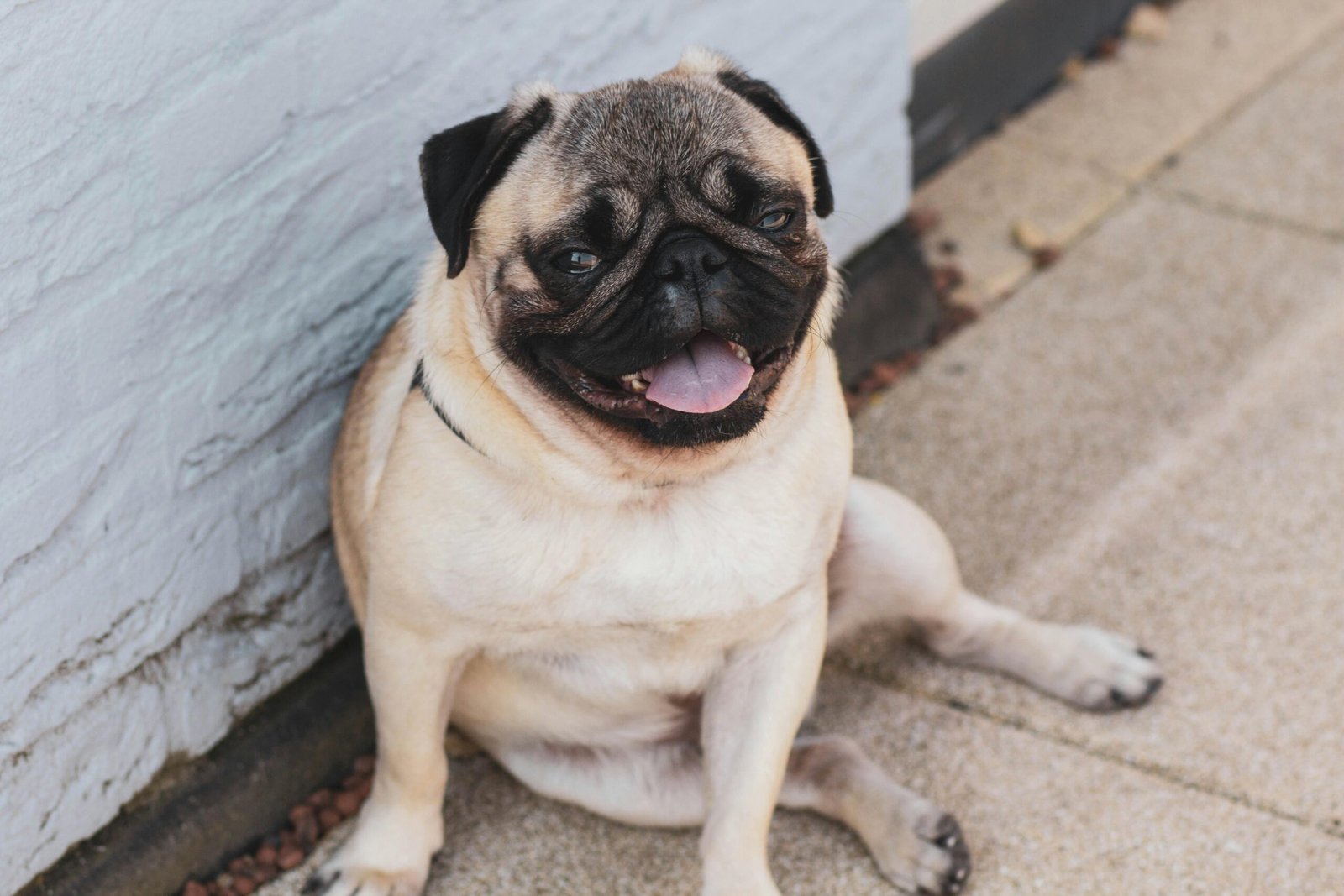Are you considering adding a pug to your family? Whether you’re leaning towards buying a pug from a breeder or adopting one from a rescue organization, it’s important to ensure that your decision aligns with ethical practices. In this comprehensive guide, we’ll walk you through the key factors to consider when buying or adopting a pug, including understanding responsible breeding practices, recognizing signs of a reputable breeder, and exploring the benefits of adopting a pug from a rescue. Stay tuned for valuable insights and tips on how to make an ethical choice that will enrich both your life and the life of your future furry friend.

This image is property of images.pexels.com.
1. Researching Pugs
Understanding the Pug breed
Before embarking on the journey of bringing a Pug into your life, it is crucial to understand the Pug breed. Pugs are small dogs with distinctive physical features, including a wrinkled face, curly tail, and a compact body. They are known for their friendly and sociable nature, making them wonderful companions for individuals and families alike. By researching about the Pug breed, you will gain insight into their temperament, exercise needs, and overall care requirements.
Learning about common health issues
As with any breed, it is necessary to be aware of the common health issues that Pugs may face. Pugs are prone to certain health conditions such as respiratory problems, eye issues, and obesity. Educating yourself about these potential health concerns will enable you to be proactive in providing appropriate care and seeking timely veterinary assistance when needed. By familiarizing yourself with the common health issues, you can better understand how to keep your Pug healthy and happy.
Considerations for owning a Pug
Owning a Pug comes with certain considerations that should be taken into account. Pugs thrive in a loving and nurturing environment but can be prone to separation anxiety if left alone for extended periods of time. Additionally, their short snouts can make them more susceptible to overheating in hot weather. Understanding these important factors will help you determine if you are prepared to meet the specific needs of a Pug and provide them with the care they require.
2. Adopting a Pug
Finding reputable Pug rescue organizations
If you decide to adopt a Pug, it is crucial to find reputable Pug rescue organizations. These organizations are dedicated to finding loving homes for Pugs in need. Researching and identifying reputable rescue organizations will ensure that you are supporting a cause that prioritizes the well-being of the dogs. Look for organizations that undergo thorough screening of potential adopters, provide necessary veterinary care, and have successfully placed Pugs in caring homes in the past.
Understanding the adoption process
Once you have found a reputable Pug rescue organization, it is important to understand the adoption process. Every organization may have slightly different procedures, but generally, it involves filling out an application, attending an interview or home visit, and paying an adoption fee. Familiarize yourself with the specific requirements of the organization you choose to work with so that you can prepare accordingly and navigate the adoption process smoothly.
Preparing your home for a rescued Pug
Preparing your home for a rescued Pug is a vital step to ensure their safety and comfort. Pugs are inquisitive and curious dogs, so it is important to create a secure environment for them. Remove any potential hazards such as toxic plants, loose wires, or small objects that can be easily swallowed. Additionally, provide them with a cozy bed, food and water bowls, toys, and a designated area for them to feel safe and relax. Making the necessary preparations in advance will help ease the transition for both you and your new furry family member.

This image is property of images.pexels.com.
3. Identifying Responsible Breeders
Knowing the difference between responsible and unethical breeders
If you opt to purchase a Pug from a breeder, it is crucial to differentiate between responsible and unethical breeders. Responsible breeders prioritize the health and well-being of their dogs, whereas unethical breeders may prioritize profit over the welfare of the animals. Responsible breeders conduct health testing on their breeding dogs, provide appropriate socialization, and offer support to puppy owners. On the other hand, unethical breeders often breed without proper genetic testing, keep dogs in poor conditions, and do not offer support after the sale. Understanding the distinction between the two will help you make an informed decision when selecting a breeder.
Researching breeder reputations
Thoroughly researching the reputations of breeders is essential to ensure you are working with a reputable and ethical breeder. Look for breeders who have a long-standing reputation for producing healthy Pugs with desirable traits. Seek recommendations from trusted sources, such as local breed clubs or veterinary professionals. It is also advisable to visit online forums and communities where Pug owners share their experiences and provide insights into reputable breeders they have worked with in the past. Gathering as much information as possible will enable you to make an educated choice when selecting a breeder to work with.
Visiting and evaluating breeder facilities
Before committing to a breeder, it is important to visit and evaluate their facilities. A responsible breeder will be transparent and allow potential buyers to visit their premises. During your visit, observe the living conditions of the dogs, paying attention to their hygiene and overall well-being. Assess the temperament of the Pugs and interact with them if permitted. Additionally, inquire about the breeder’s breeding practices, such as the frequency of breeding and the age of retirement for their breeding dogs. This will help you gauge the breeder’s commitment to producing healthy and well-adjusted Pugs.
4. Assessing Breeder Ethics
Checking for breed health testing
When considering a breeder, it is crucial to check if they conduct health testing on their breeding dogs. Responsible breeders prioritize the health of their Pugs and perform relevant health tests to screen for potential genetic disorders. These tests help ensure that the puppies are less likely to inherit certain conditions. Common health tests for Pugs include examinations for hip dysplasia, patellar luxation, and genetic eye disorders. By confirming that the breeder conducts health testing, you can have more confidence in the overall well-being of the puppies.
Evaluating breeding practices
In addition to health testing, evaluating the breeder’s breeding practices is essential. Responsible breeders carefully select breeding pairs based on temperament, genetic health, and conformation to breed standards. They avoid overbreeding their dogs and provide sufficient rest periods between litters to ensure the well-being of the mother. Understanding the breeder’s approach to breeding will provide insight into their dedication to producing healthy and well-adjusted Pug puppies.
Understanding breeder’s commitment to puppies’ well-being
A reputable breeder should demonstrate a strong commitment to the well-being of their puppies. This includes providing appropriate socialization from a young age, ensuring proper veterinary care, and being available for support and guidance throughout the puppy’s life. Inquire about the breeder’s policies regarding rehoming if circumstances change and their willingness to take back a dog they have bred. A responsible breeder will prioritize the happiness and welfare of their puppies long after they have left their care.

This image is property of images.pexels.com.
5. Meeting the Pug
Arranging a visit with the breeder or rescue organization
Once you have identified a breeder or rescue organization, it is important to arrange a visit to meet the Pug you are considering. Meeting the dog in person will give you an opportunity to observe their behavior and temperament firsthand. Additionally, it allows you to develop a connection and assess if the Pug is a good fit for your lifestyle and family dynamics. Arrange a mutually convenient time with the breeder or rescue organization, ensuring that you have enough time to interact with the Pug and ask any questions you may have.
Observing the Pug’s behavior and temperament
During your visit, closely observe the Pug’s behavior and temperament. A healthy and well-adjusted Pug should be alert, curious, and friendly. They should show interest in their surroundings and engage positively with people. Look for signs of fear, aggression, or excessive shyness, which may indicate inadequate socialization or underlying behavioral issues. A Pug with a balanced temperament will be more likely to adapt well to your home and family environment.
Inquiring about the Pug’s background and history
While spending time with the Pug, take the opportunity to inquire about their background and history. If adopting, ask the rescue organization about the Pug’s previous living situation and any information they have about the dog’s personality, training, and health history. If purchasing from a breeder, inquire about the Pug’s lineage, including the temperament and health of their parent Pugs. Understanding the dog’s background and history will give you important insights into their potential future behavior and any specific care needs they may have.
6. Health and Genetic Considerations
Requesting health records and genetic testing information
When considering a Pug, it is essential to request health records and genetic testing information from the breeder or rescue organization. This documentation will provide crucial details about the Pug’s health history, including vaccinations, veterinary examinations, and past medical treatments. Additionally, inquire about any genetic testing that has been conducted on the dog or their parents to screen for potential hereditary conditions. Gathering this information will help you make informed decisions regarding the future health and care of the Pug.
Understanding common Pug health issues
Pugs are prone to certain health issues, and it is important to understand and prepare for these potential challenges. Respiratory problems, such as difficulty breathing, are common due to their short snouts. Eye issues, including corneal ulcers and dry eye syndrome, are also prevalent in the breed. Obesity is another concern that can lead to various health complications. Educate yourself about these common health issues to ensure that you can proactively manage and prevent them wherever possible.
Assessing the Pug’s overall health and condition
During your visit or initial interactions, assess the Pug’s overall health and condition. Look for signs of any visible health problems, such as excessive scratching, discharge from the eyes or nose, or difficulty breathing. Check the weight and body condition of the Pug to ensure they are within a healthy range. A healthy Pug should have clear eyes, a shiny coat, and be alert and energetic. If any concerns arise about the Pug’s health, consult with a veterinarian for a professional evaluation before proceeding with adoption or purchase.
7. Asking the Right Questions
Inquiring about socialization and training
When considering a Pug, it is important to inquire about their socialization and training experiences. Socialization plays a crucial role in a dog’s development, and a well-socialized Pug is more likely to adapt and interact positively with people and other animals. Ask the breeder or rescue organization about the steps they have taken to socialize the Pug, such as exposing them to a variety of environments, experiences, and individuals. Additionally, inquire about any basic training that the Pug has received.
Asking about parent Pugs’ temperament and health
If purchasing a Pug from a breeder, it is vital to inquire about the temperament and health of the parent Pugs. As genetics play a significant role in a dog’s personality and overall health, understanding the parent Pugs’ traits will provide insight into the potential characteristics of the puppy you are considering. Responsible breeders will be forthcoming about the parent Pugs’ temperament and health and should be able to provide relevant information upon request.
Questioning breeder or rescue organization about support and guidance
Before finalizing the adoption or purchase, it is important to question the breeder or rescue organization about the support and guidance they provide to new owners. Responsible breeders and reputable rescue organizations care deeply about the well-being of their Pugs and offer continued support even after the transaction is complete. Inquire about their willingness to answer questions, provide guidance on care, and address any concerns that may arise in the future. A reliable breeder or rescue organization should be there as a resource and support system throughout your journey as a Pug owner.
8. Understanding Adoption or Purchase Agreements
Reviewing adoption or purchase contracts
When adopting a Pug or purchasing from a breeder, it is essential to thoroughly review the adoption or purchase contract. These agreements outline the rights and responsibilities of both parties involved and ensure that the welfare of the dog is protected. Pay close attention to clauses regarding health guarantees, return policies, and any limitations or restrictions that may apply. If any terms are unclear or you have concerns about specific clauses, seek clarification from the breeder or organization before proceeding.
Identifying red flags in contracts
While reviewing the adoption or purchase contract, it is important to be aware of potential red flags. A reputable breeder or rescue organization should have fair and reasonable terms that prioritize the well-being of the dog. Be cautious of contracts that impose overly restrictive conditions, lack transparency, or limit your rights as a responsible owner. If you come across any suspicious clauses or provisions that raise concerns, consider this a warning sign and reevaluate your decision to work with that particular breeder or organization.
Clarifying responsibilities and obligations
One of the primary purposes of an adoption or purchase agreement is to clarify the responsibilities and obligations of both parties involved. Ensure that you have a clear understanding of your responsibilities as an owner, including providing appropriate care, regular veterinary check-ups, and a loving environment for the Pug. Additionally, understand the breeder or rescue organization’s obligations, such as providing accurate health records, supporting you during the transition period, and addressing any issues that may arise. Clarifying responsibilities and obligations beforehand will help establish a strong foundation for a successful partnership.
9. Preparing for the Arrival of Your Pug
Gathering essential supplies for your Pug
Before your Pug’s arrival, it is essential to gather the necessary supplies to ensure their comfort and well-being. This includes items such as a suitable dog bed, food and water bowls, high-quality dog food, toys, a leash and collar, and grooming tools. Setting up your home with these supplies in advance will help your Pug settle in more comfortably when they arrive.
Creating a safe and comfortable space for your Pug
It is important to create a safe and comfortable space for your Pug in your home. Designate an area where your Pug can rest and feel secure, such as a cozy corner or a crate with soft bedding. This space should be free from hazards and provide a sense of security for your Pug. Consider introducing them to their designated space gradually, allowing them to acclimate at their own pace.
Understanding Pug-specific care needs
Pugs have specific care needs that should be understood and addressed to ensure their well-being. Their short snouts make them more susceptible to respiratory issues, so it is crucial to monitor their breathing and prevent overexertion, particularly in hot weather. Regular exercise and mental stimulation are important for maintaining their overall health. Additionally, Pugs require routine grooming, including regular nail trims, ear cleaning, and dental care. By understanding and addressing these Pug-specific care needs, you can provide the best possible care for your new companion.
10. Continuing Responsible Pug Ownership
Providing proper nutrition and exercise
As a responsible Pug owner, providing proper nutrition and exercise is crucial for their overall health and well-being. Feed your Pug a balanced and high-quality diet that suits their specific needs, taking into consideration their age, activity level, and any dietary restrictions. Regular exercise is also important to prevent weight gain and promote mental and physical stimulation. Engage in activities that match your Pug’s energy levels, such as short walks or play sessions. Consulting with a veterinarian for guidance on nutrition and exercise will help ensure that you meet your Pug’s unique requirements.
Understanding grooming requirements
Pugs have specific grooming requirements that should be incorporated into your regular care routine. Regular brushing helps to control shedding and keeps their coat clean and healthy. Pay special attention to their facial wrinkles, making sure to clean and dry them thoroughly to prevent skin infections. Routine dental care, such as brushing their teeth and providing appropriate dental chews, is also crucial to maintain their oral health. By understanding and addressing these grooming requirements, you can help keep your Pug looking and feeling their best.
Regular vet check-ups and vaccinations
Regular veterinary check-ups and vaccinations are important aspects of responsible Pug ownership. Schedule regular wellness exams to monitor your Pug’s overall health and address any concerns in a timely manner. Ensure that they receive all necessary vaccinations to protect against common diseases. Additionally, discuss with your veterinarian any specific health concerns or considerations for Pugs, such as monitoring their weight, potential breathing difficulties, or any breed-specific conditions. By staying proactive in your Pug’s healthcare, you can provide them with a long and healthy life.
In conclusion, whether you are looking to adopt or purchase a Pug, it is essential to conduct thorough research and make informed decisions. Understanding the Pug breed, identifying reputable breeders or rescue organizations, and asking the right questions will ensure that you provide a loving and responsible home for your new Pug. By taking the time to prepare properly and continuing responsible ownership throughout your Pug’s life, you will create a lasting and rewarding bond with your furry companion.



